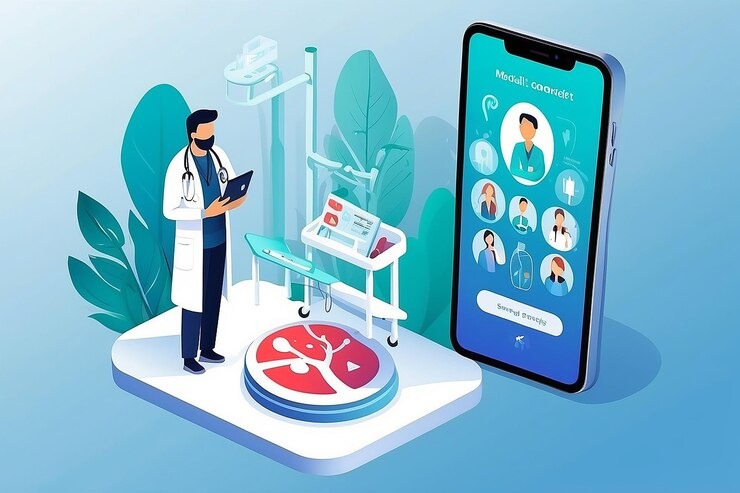The future of healthcare is connected, continuous, and data-driven. As hospitals and clinics shift toward smarter, more proactive care models, real-time patient monitoring systems powered by IoT and robust backends are taking center stage.
One of the most powerful combinations for building these systems? .NET and IoT.
With its scalability, security features, and tight integration with Azure IoT services, .NET is uniquely suited for creating real-time health applications that collect, analyse, and act on patient data across devices, locations, and care teams.
In this blog, we’ll walk through how to build a secure, scalable IoT-enabled patient monitoring system using .NET and why organisations are turning to trusted .NET software development companies to lead the charge.
Why Use .NET for IoT-Powered Healthcare Systems?
.NET (especially with .NET Core and .NET 8+) offers an ideal environment for mission-critical healthcare applications:
- Cross-platform development for cloud, desktop, and embedded systems
- Integration with Azure IoT Hub, Azure Functions, and SignalR
- Built-in security and encryption features
- High performance with low memory overhead — ideal for edge processing
- Strong tooling and long-term support from Microsoft
HealthTech firms working with a skilled .NET development company can quickly prototype and scale solutions while staying compliant with healthcare regulations like HIPAA and GDPR.
Architecture of a Real-Time Patient Monitoring System
Here’s how a typical .NET + IoT-based patient monitoring system is structured:
-
IoT Devices (Edge Layer)
Wearables or medical devices capture vitals such as:
- Heart rate
- Blood pressure
- Oxygen saturation (SpO2)
- Temperature
- Movement or fall detection
These devices send data to a local IoT gateway or directly to the cloud using protocols like MQTT or HTTPS.
-
IoT Gateway & Azure IoT Hub (Data Ingestion Layer)
Azure IoT Hub receives, authenticates, and manages data from thousands of connected devices.
You can configure:
- Message routing to different backend services
- Device twins for configuration management
- Bi-directional communication to send commands back to devices (e.g., adjust sampling rate)
This secure connection layer is a critical component — and something experienced net development company teams are adept at implementing for medical-grade systems.
-
Processing Layer (Azure Functions + .NET APIs)
Real-time data is processed using:
- Azure Functions (serverless event handlers)
- .NET Core APIs for business logic
- SignalR for real-time dashboards and alerts
For example:
- Trigger an alert if heart rate > 150 BPM
- Update patient vitals dashboard instantly
- Store readings in a long-term analytics database
-
Storage & Analysis Layer
For historical analysis and compliance:
- Use Azure Cosmos DB or SQL Database for patient records
- Integrate Azure Machine Learning to detect anomalies or predict risk
- Store audit logs for regulatory requirements
Advanced analytics help healthcare teams make informed decisions — a reason why providers often hire dedicated .NET developers to build tailored reporting modules.
-
Frontend Interfaces
- Web portals for doctors and administrators (built with ASP.NET Core MVC or Blazor)
- Mobile apps for caregivers or family members
- Push notifications for alerts or thresholds crossed
All interfaces are secured with role-based access control and data encryption at rest and in transit.
Key Features to Include in a Monitoring System
When building a production-ready patient monitoring platform, aim for:
- Real-Time Alerts: Immediate notifications when vital thresholds are crossed via SMS, email, or app.
- Historical Vitals Charting: Allow doctors to track trends over time — e.g., comparing heart rate over days or weeks.
- Remote Configuration: Update device settings remotely via IoT Hub or APIs (sampling rates, alert limits).
- Device Authentication and Security: Use certificates and tokens to prevent unauthorised data injection or device spoofing.
- Offline Mode and Sync: Allow devices to operate and store data temporarily when offline, syncing once connected.
Security and Compliance in Healthcare IoT
Medical data is highly sensitive. Your system must be designed with security and privacy baked in:
- Data encryption using TLS for transmission and AES at rest
- Authentication and access controls (OAuth2, JWT)
- Role-based access control for users (doctors, patients, admins)
- Audit logging for every change, view, or alert
- Compliance with HIPAA, GDPR, and local medical data laws
Partnering with a trusted .NET software development company ensures these security requirements are met from day one — not retrofitted later.
Benefits for Healthcare Providers and Patients
IoT-powered monitoring improves care for all stakeholders:
For Doctors:
- Faster response time to emergencies
- Richer data for diagnosis
- Less reliance on subjective patient input
For Patients:
- Greater independence and safety at home
- Fewer hospital visits
- Peace of mind for loved ones
For Providers:
- Reduced readmissions
- Optimised resource allocation
- Enhanced patient engagement
These benefits are already being realised in clinics and home care solutions developed by expert .NET development company partners worldwide.
When to Engage with a .NET IoT Partner
If you’re serious about real-time healthcare innovation, it’s time to:
- Hire dedicated .NET developers with experience in IoT and healthcare
- Validate your architecture with proof of concept
- Ensure scalability for future device growth
- Implement airtight compliance and audit controls
From device integration to cloud architecture, building a secure and scalable patient monitoring platform requires end-to-end expertise — both in .NET and healthcare systems.
Conclusion: Smarter Care Starts with Real-Time Insight
The healthcare industry is shifting from reactive to proactive care models, and real-time patient monitoring is the foundation of this evolution. With .NET and Azure IoT, organisations can build platforms that are secure, scalable, and intelligent — ready to improve lives and outcomes.
Whether you’re launching a pilot project or scaling across multiple care facilities, the right .NET software development company — or team of dedicated .NET developers — can turn your vision into a life-saving reality.

Leave a Reply